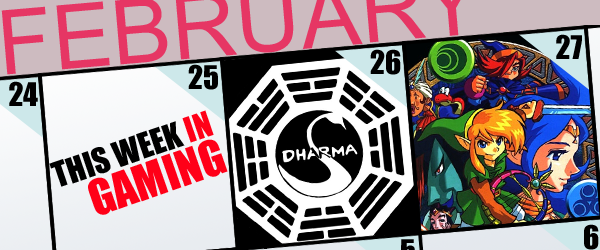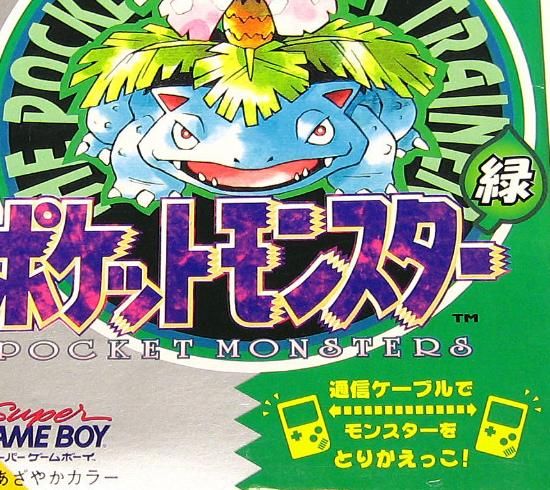Welcome to This Week in Gaming, where we take a look back at some of the most newsworthy events in gaming history from last year to even decades ago that happened this very week. Take a gander at some of the highlights and see which spark nostalgia and which may still be news to you.
This Place Is Death
February 26, 2008
How would you like to enjoy a peaceful vacation on a tropical island? Sounds amazing, right? That is...until it's interrupted by plane crashes, polar bears, the Others and smoke monsters. Lost: Via Domus is a non-canon approach to one of televisions most plot-twisting stories. The game introduces a new character to the cast and his storyline is as confusing as the rest of them, he has amnesia. That's about the only redeeming quality to the game. Sure, the show is fantastic, but the game is only average. It received scores of 50/100 but no 42, strange. It would have been nice if they waited until after all 6 seasons aired so more mysteries could be included. Like, what happened to Jack's son after being reunited with his friends? Who fell out the window of the building Hurley was visiting? We still need answers, we have to go back! But whatever happened, happened. It's not like I'm some obsessed fan of the show and have the numbers tattooed on my arm. I'm not crazy, dude.
Gotta Catchem' All
February 27, 1996
In 1998, the Pokémon craze hit America hard, but not many know it all started years earlier in Japan with the release of Pokémon Red Version and Pokémon Green Version. The first games of the franchise introduced 151 unique pocket monsters that you must collect, trade and battle with. Link up with friends to transfer between each version so you can catch all the Pokémon because there were specific Pokémon available in each game. Red, Green and later, Blue, sold over 10 million copies in Japan. This became the building blocks for a multi-billion dollar franchise. Because of the success Pokémon has gained, years later remakes of these two games were made; Pokémon FireRed and Pokémon LeafGreen. They came with updated graphics and yes, hundreds of more Pokémon. With constantly growing stories and characters to the games we'll probably receive another revamped version of the games within the next decade or so.
A Game For All Seasons
February 27, 2001
With Pokémon fresh in everyone's minds, Nintendo entrusted Capcom to develop a similar game for their beloved Zelda franchise. The Legend of Zelda: Oracle of Seasons along with Oracle of Ages were released together for the Game Boy Color. Both games tell completely different stories and could have been released further apart as their own little titles because they're so unique from each other. In Seasons, players have control over (what else) the seasons. Each of them change the landscape, sometimes snow can hide secrets. In Ages players are able to time travel, venturing from past to present. Landscapes also change, because over time some buildings or landmarks might not have existed at one time. Players of one game can link (haha, get it?) together and trade codes to find some goodies. Many characters from previous games make appearances which keeps die-hards interested. Both games earned high marks and even got a book deal with Scholastic.
A Winner Is Yu
February 27, 2003
Hey, Yu. No, not you. I'm talking about Yu Suzuki! On this particular date, Mr. Suzuki was inducted into the Academy of Interactive Arts & Sciences' Hall of Fame. This made him only the sixth person to receive that honor. This achievement is awarded to individuals who have contributed immensely to the video game industry. As a longtime Sega employee, Mr. Suzuki worked on huge titles such as Virtua Fighter, Shenmue and Game of the Year winner Out Run. The reasons behind his placement in the Hall of Fame are for his contributions to arcade games and pioneering the use of 3D. Out Run allowed drivers to get to the finish line in their own way. Because of the innovative, realistic graphics of Virtua Fighter, it paved the way for all future fighters and even landed itself in the Smithsonian Institution. If his game goes in a museum, then surely he should be as well. You would not be able to play any modern racing or fighting game without the work this man has done for the genres. Thank Yu!
Cracking the Code
February 29, 2000
There's been quite a lot of talk lately over Resident Evil, you know, with all the disappointments. But there was a time when things weren't so glum in a zombie-infested world. Resident Evil Code: Veronica debuted on the Sega Dreamcast and received positive reviews from various publications. New weapons are introduced with this game, including a crossbow and dual-wielding pistols. This was also the first game in the series to use 3D backgrounds. These features mixed with an action-packed story earned Code: Veronica the honor of being one of the best games for the Dreamcast as well as one of the greatest of all time. After its success with one console, it was released for PlayStation 2, GameCube, and later, the PlayStation 3. With each console able to support the game, it sold over 3 million copies worldwide. Maybe Capcom should have retraced its roots so their latest installment would have had the same success.






